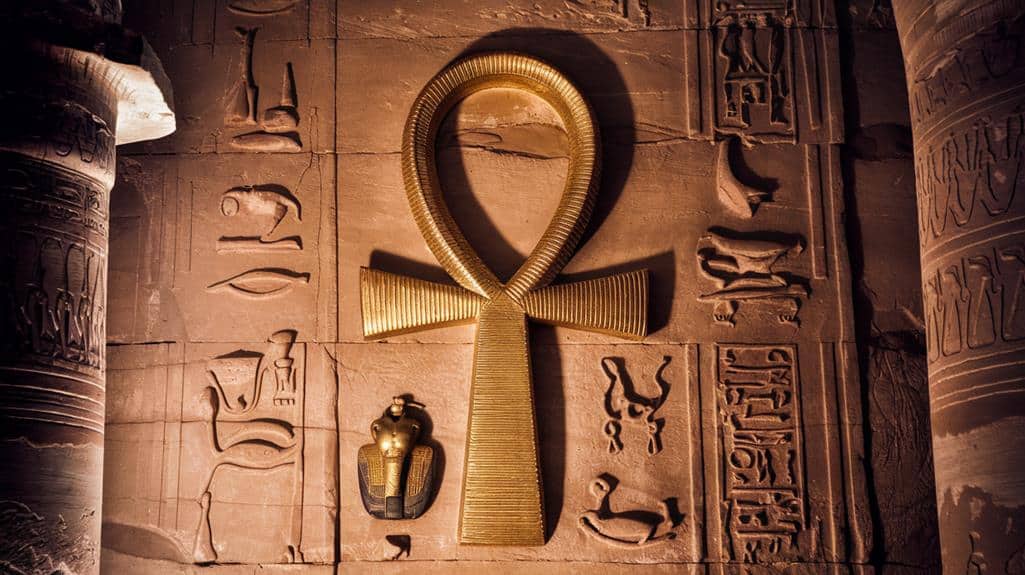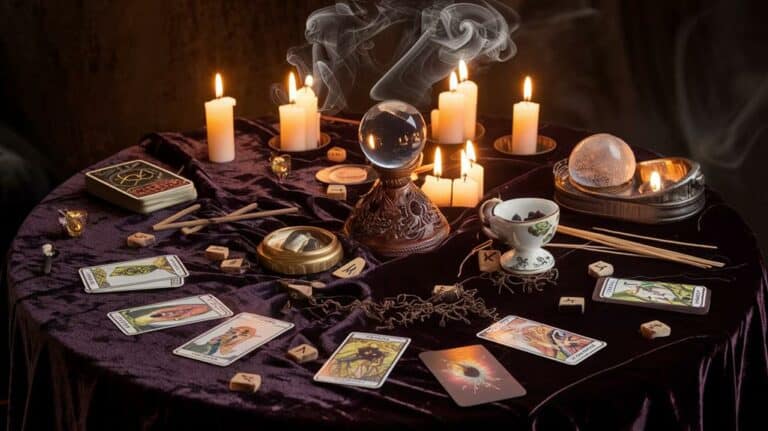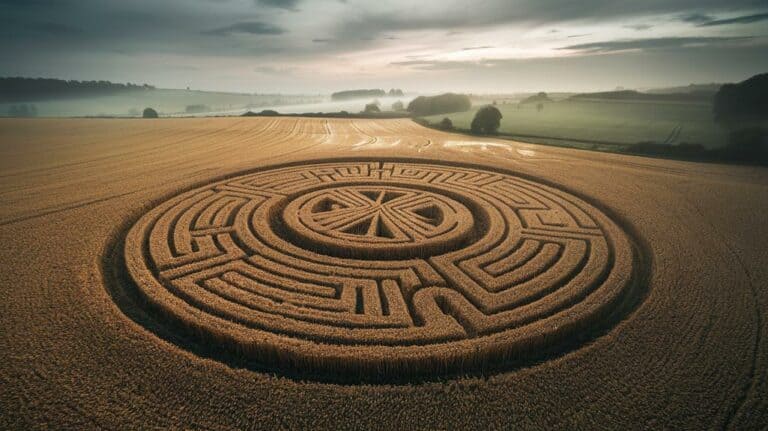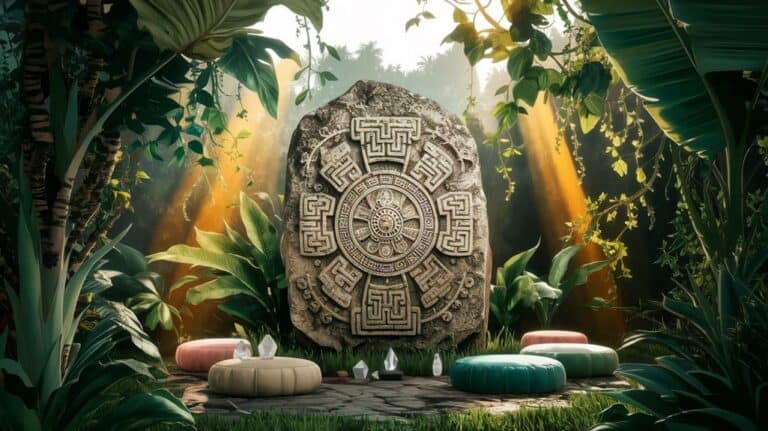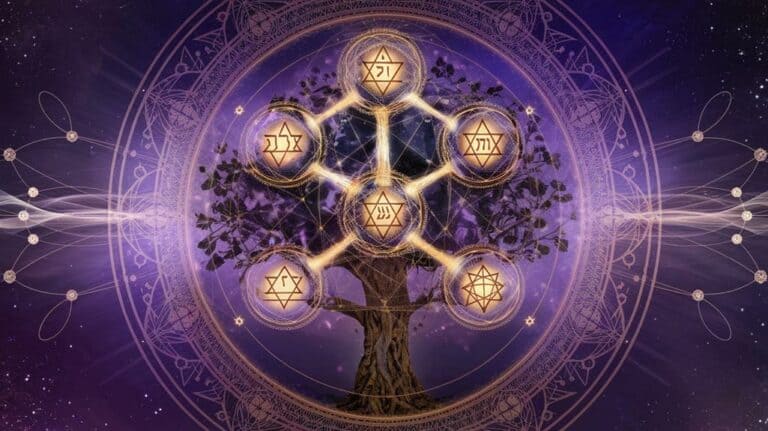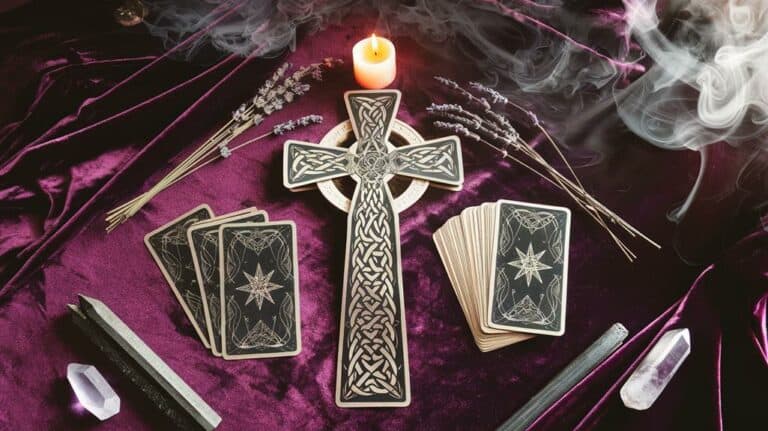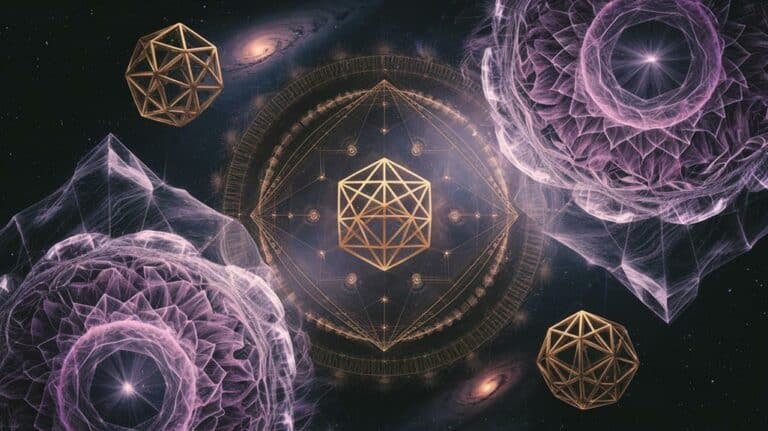7 Ancient Egyptian Symbols of Power
You’ve likely encountered ancient Egyptian symbols in museums, movies, or books, but you may not realize how these powerful emblems shaped one of history’s most fascinating civilizations. From the life-giving Ankh to the protective Uraeus Cobra, these seven royal symbols weren’t mere decorative elements—they represented divine authority and earthly power in perfect balance. Each symbol carried profound significance that legitimized the pharaoh’s rule and connected the mortal domain to the gods. Let’s explore how these sacred emblems influenced Egyptian society and why they continue to captivate our imagination thousands of years later.
The Sacred Ankh
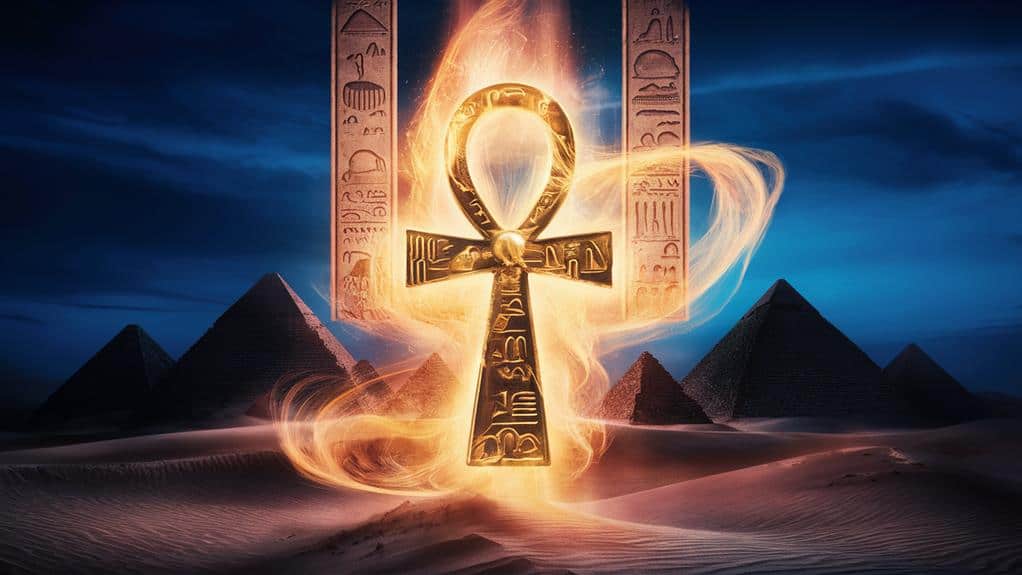
Throughout ancient Egypt’s long history, the ankh stood as one of the most recognizable and powerful hieroglyphic symbols. You’ll find this cross-like shape with its distinctive loop at the top carved into temple walls, painted on tomb murals, and adorning the hands of pharaohs and deities alike.
As you contemplate its form, you’re connecting with an emblem that transcends mere decoration – it’s the key of life itself, a bridge between mortal existence and eternal being.
When you encounter the ankh in Egyptian art, you’re witnessing the ancient Egyptians’ profound understanding of life’s perpetual cycle. It’s not just about physical life – you’re looking at a symbol that represents the eternal soul’s journey, the divine breath that sustains creation, and the sacred union between earthly and celestial domains.
You’ll notice how gods often hold it to the nostrils of pharaohs, breathing eternal life into their beings. The ankh’s enduring power lies in its dual nature: it’s both a promise of immortality and a reminder of your own essential force, connecting you to both the mundane and divine aspects of existence.
Uraeus Cobra
Moving from the spiritual essence of the ankh, we encounter another mighty symbol of Egyptian power: the Uraeus cobra. You’ll find this rearing serpent adorning the foreheads of pharaohs and deities, its hood flared in eternal vigilance, embodying both protection and sovereign authority.
As you gaze upon this sacred cobra, you’re witnessing the manifestation of the goddess Wadjet, fierce guardian of Lower Egypt and protector of royalty.
When you examine ancient temple walls and royal artifacts, you’ll notice how the Uraeus serves as more than mere decoration. It’s a warning to enemies and a reminder of divine protection, its upright form suggesting readiness to strike those who’d dare threaten the established order.
You can see how this symbol’s power transcends its physical representation – it’s a bridge between earthly authority and celestial mandate. The cobra’s hypnotic presence on royal regalia wasn’t just about intimidation; it represented your pharaoh’s divine right to rule and their responsibility to maintain Ma’at, the cosmic order that balanced justice and truth in ancient Egyptian society.
Double Crown of Egypt
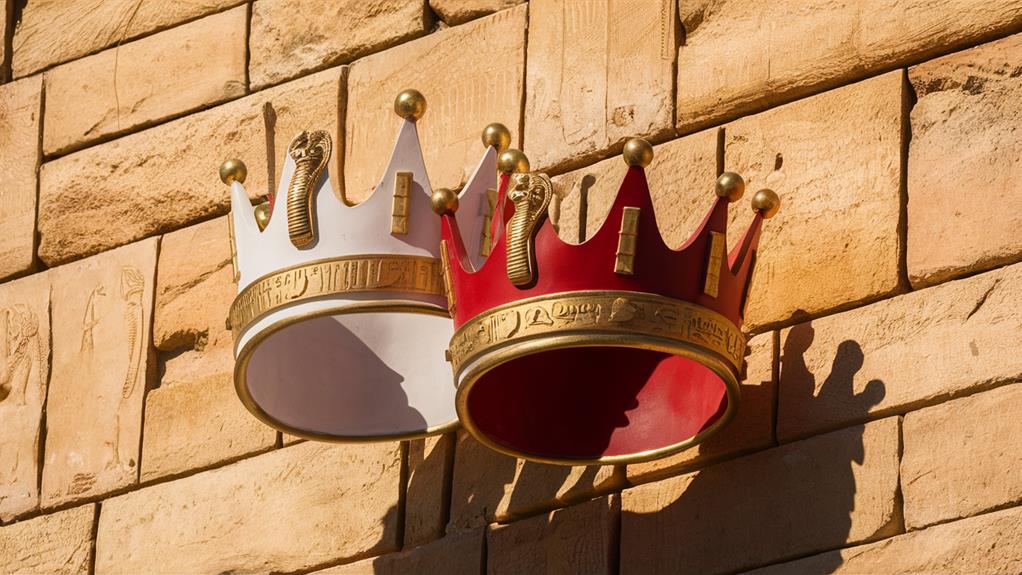
When two ancient kingdoms merged into a unified Egypt, their distinct crowns combined to create the pschent, or Double Crown – one of ancient Egypt’s most commanding symbols of royal power.
You’ll notice how the white crown of Upper Egypt and the red crown of Lower Egypt intertwine to form this majestic headdress, representing the pharaoh’s absolute authority over both lands.
As you study the Double Crown’s intricate design, you’ll discover how it embodies the delicate balance between opposing forces – the desert south and fertile north, divided yet united under a single ruler’s dominion.
You can trace its evolution through countless temple reliefs and royal statues, where pharaohs proudly display this potent symbol of their divine right to rule.
The pschent’s dual nature reflects your own understanding of how seemingly contradictory elements can merge to create something more powerful than their individual parts.
When you examine surviving artistic depictions, you’ll see how the Double Crown towers above the pharaoh’s head, its imposing height and distinctive silhouette instantly identifying its wearer as Egypt’s supreme ruler, bridging the earthly and divine domains.
Was Scepter
Among ancient Egypt’s revered royal regalia, the Was scepter stood as an essential emblem of divine authority and dominion. You’ll recognize this powerful symbol by its distinctive shape – a straight staff topped with a stylized animal head, often depicting the enigmatic Set-beast, and ending in a forked base that represents stability and duality.
As you explore deeper into the Was scepter’s significance, you’ll discover how it served as more than just a ceremonial object. You’re witnessing an instrument that bridged the earthly and divine domains, as pharaohs and deities alike wielded it to demonstrate their command over order and chaos.
When you examine ancient temple walls, you’ll notice how gods frequently grasp this scepter, marking their dominion over cosmic forces.
The Was scepter’s power extends beyond its physical form – it’s a reflection of humanity’s eternal quest for balance and control. You’re looking at an object that transforms its bearer into a channel of divine authority, connecting them to the very forces that ancient Egyptians believed governed existence.
It’s through this sacred tool that you can glimpse how rulers maintained their divine right to power.
The Eye of Horus
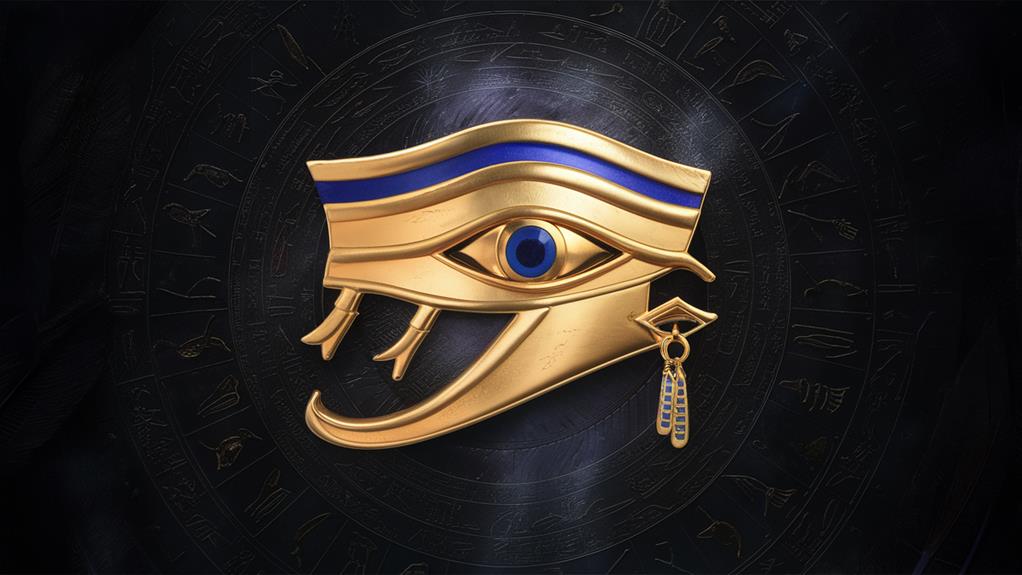
In accordance with ancient Egyptian belief, the Eye of Horus represented divine protection, royal power, and healing. When you gaze upon this profound symbol, you’ll discover how it embodies the eternal struggle between order and chaos, light and darkness. It’s a reflection of humanity’s enduring quest for divine protection in an uncertain world.
You’ll find the Eye’s significance deeply woven into the fabric of Egyptian consciousness, where it served as both a royal emblem and a powerful amulet. As you explore its meaning, you’ll notice how the symbol’s six parts correspond to your basic senses, with each fragment representing a fraction of mathematical precision. This wasn’t merely decorative – it was a cosmic formula for wholeness and restoration.
The Eye’s restorative power stems from the myth of Horus’s own healing after his battle with Set, and you’ll see this reflected in the ancient Egyptians’ use of the symbol in medicine and protection rituals.
When you understand the Eye of Horus, you’re connecting with an archetypal symbol that transcends time, speaking to your deepest needs for security and spiritual wholeness.
Royal Cartouche
Since pharaohs needed a way to distinguish their names in hieroglyphic writing, the royal cartouche emerged as an oval-shaped frame that encircled their names and titles.
You’ll find this powerful symbol etched into temple walls, carved onto majestic obelisks, and painted within sacred tomb chambers, where it served as both a mark of divine authority and a protective seal for the pharaoh’s identity throughout eternity.
When you examine a cartouche closely, you’ll notice it’s formed by a loop of rope that’s knotted at one end, symbolizing everything the sun encircles is under the pharaoh’s dominion.
The rope itself creates an elongated oval that protects the royal name from evil forces, while simultaneously broadcasting the pharaoh’s power to both the mortal and divine spheres.
Within this sacred boundary, you’ll discover the hieroglyphic spelling of the ruler’s name, often accompanied by titles like “Son of Ra” or “Lord of Two Lands.”
Even today, you can trace your fingers along these ancient cartouches and connect directly with the pharaohs’ enduring legacy of power and divine authority.
Crook and Flail
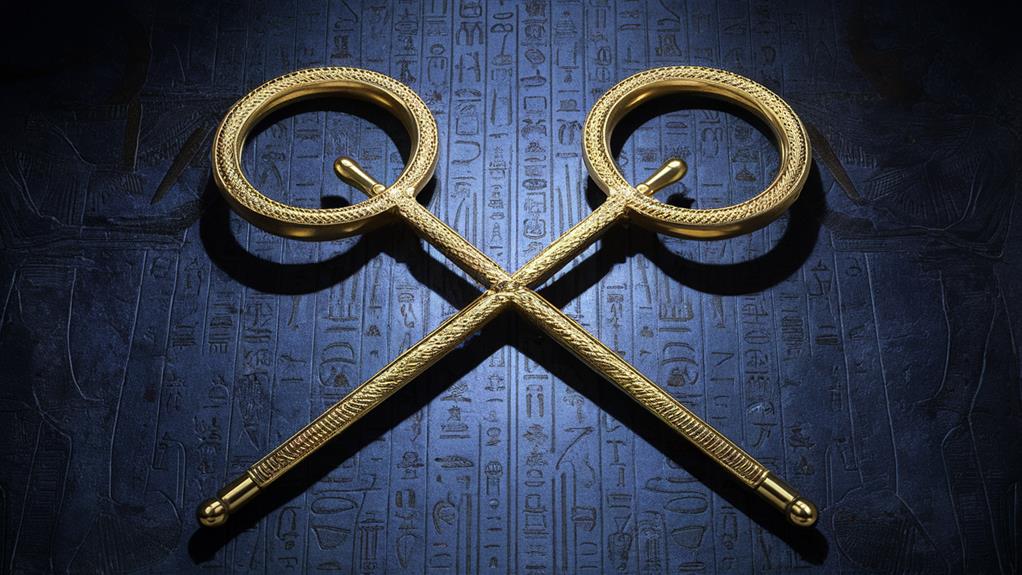
Wielding supreme authority over ancient Egypt, the crook and flail stood as the pharaoh’s most recognizable symbols of divine power and royal responsibility.
You’ll find these sacred implements depicted in countless reliefs and statues, where they’re crossed over the pharaoh’s chest in an X formation, connecting earthly rule with divine mandate. The crook, shaped like a shepherd’s staff, represents the pharaoh’s duty to guide and protect his people, while the flail symbolizes his authority to punish those who’d threaten Egypt’s harmony.
When you examine these symbols more deeply, you’ll discover they’re more than mere accessories of power. The crook’s gentle curve reminds you of the pharaoh’s role as guardian and protector, much like a shepherd tends his flock.
Meanwhile, the flail’s weighted strands speak to the necessity of maintaining order through discipline. Together, they embody the delicate balance between mercy and justice that you’d expect from an enlightened ruler.
In your contemplation of these ancient symbols, you’ll recognize how they elegantly express the dual nature of authority: the power to nurture and the power to command.



